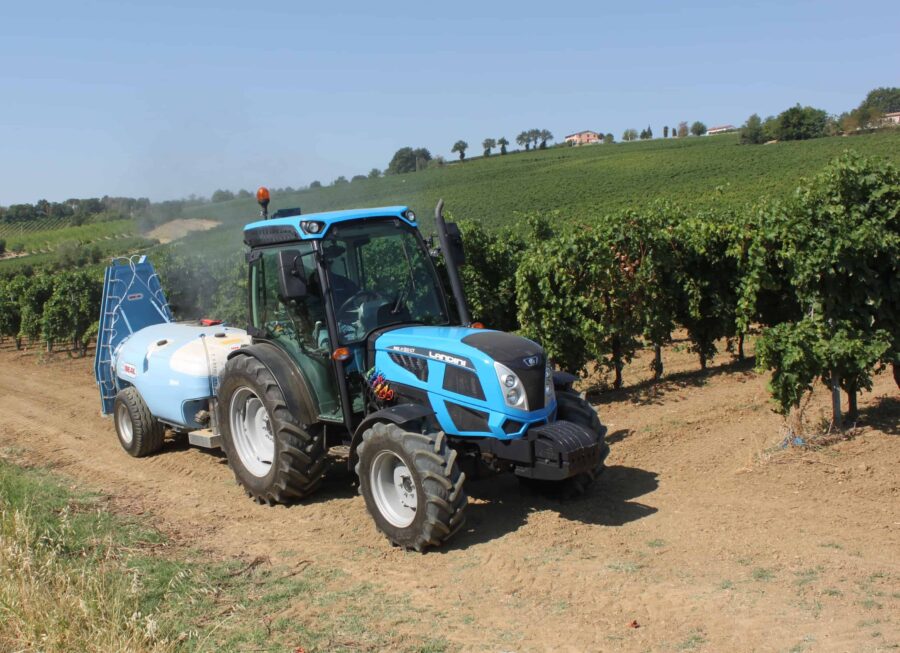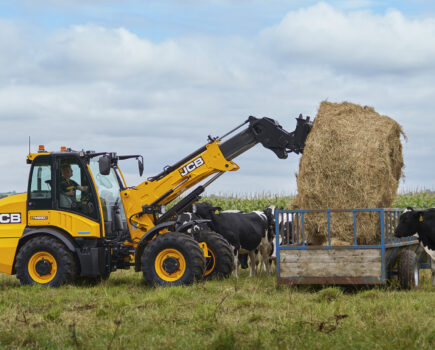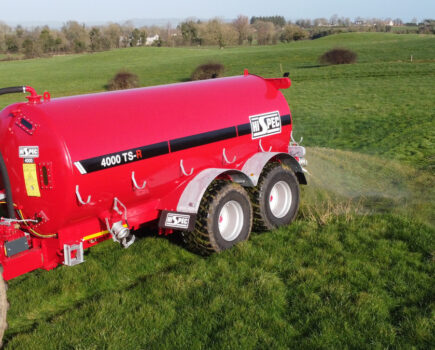A new upgrade for the tractor cab air filtration system on Landini Rex 4 tractors provides top level Category 4 protection against spray contaminants and easy change-over between regular and carbon filters.
New Rex 4 tractors with the optional CAT4 cab have both types of filter installed at the same time and operators can select either type with the flick of a switch.
This arrangement provides quick and convenient access to the maximum level of protection from potential contaminants in the cab while spraying but also optimises the service life of the special carbon filter.
“This is a pragmatic solution typical of the innovative thinking that goes into Landini products by engineers at Argo Tractors,” says Adrian Winnett, UK and Ireland managing director. “It simplifies things for the operator while also cutting filter replacement costs to a minimum.”
The new Landini Rex 4 tractors come in a number of width and wheelbase configurations, primarily for top fruit, orchard, vineyard and horticultural work.
But with up to six power outputs from 70-112hp in a very compact package, the ‘F’ and ‘GT’ versions in particular are also suited to yard and light field work on livestock farms, especially where limited space or accessibility excludes larger tractors of similar power.
Features introduced with the new range include front axle suspension for the first time, a multitude of new transmission options including two- and three-speed powershift, up to four-speed pto, and a cab with a flat floor – usually, operators have to straddle the transmission tunnel on tractors of this size.
The CAT4 cab provides maximum protection against operator contamination when the Rex 4 tractors are used with a sprayer.
There are two filter housings, one in each side of the cab roof panel, an airflow diverter inside the air intake assembly located at the back of the roof panel, and filter status information on the tractor’s instrument display.
With a general purpose filter in one side and a carbon filter in the other, operators can switch between the two as appropriate, with the cab pressurised to the level required to prevent ingress of contaminants through door seals, and so on.
“This filter arrangement is clearly more convenient than having to physically change one filter for another – and that convenience means operators are more likely to take advantage of the higher-level protection provided by carbon filtration,” says Adrian Winnett.
“Also, with a single element filtration system, once the carbon filter has been inserted ready for spraying, it will likely stay there when the tractor is used for non-spraying work and continue to degrade,” he points out.
With the Landini system, the carbon filter need only be ‘active’ when required, simply by flicking a switch in the cab. The operator can then see the carbon filter’s status, as well as the airflow speed and cab pressure, on the tractor’s instrument panel.





